This article has been reviewed according to Science X's editorial process and policies. Editors have highlighted the following attributes while ensuring the content's credibility:
fact-checked
reputable news agency
proofread
American researcher has been rescued from deep Turkish cave more than a week after he fell ill
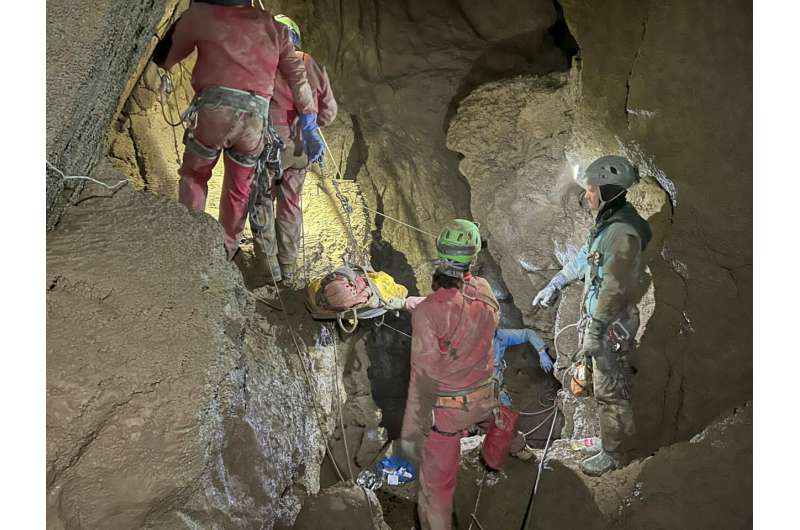
Rescuers pulled an American researcher out of a Turkish cave early Tuesday, more than a week after he became seriously ill 1,000 meters (more than 3,000 feet) below its entrance, officials said.
Teams from across Europe had rushed to Morca cave in southern Turkey's Taurus Mountains to aid Mark Dickey, a 40-year-old experienced caver who became seriously ill on Sept. 2 with stomach bleeding. He was on an expedition to map the cave, which is the country's third deepest.
Dickey was t oo frail to climb out himself, so rescuers carried him with the help of a stretcher, making frequent stops at temporary camps set up along the way before he finally reached the surface early Tuesday.
"Mark Dickey is out of the Morca cave," said a statement from the Speleological Federation of Turkey. It said that Dickey was removed from the last exit of the cave at 12:37 a.m. local time Tuesday, or 9:37 p.m. GMT Monday.
"He is fine and is being tended to by emergency medical workers in the encampment above," the statement said.
Lying on a stretcher surrounded by reporters following his rescue , Dickey described the ordeal as a "crazy, crazy adventure."
"It is amazing to be above ground again," he said, thanking the Turkish government for saving his life with its rapid response. He also thanked the international caving community, Turkish cavers and Hungarian Cave Rescue, among others.
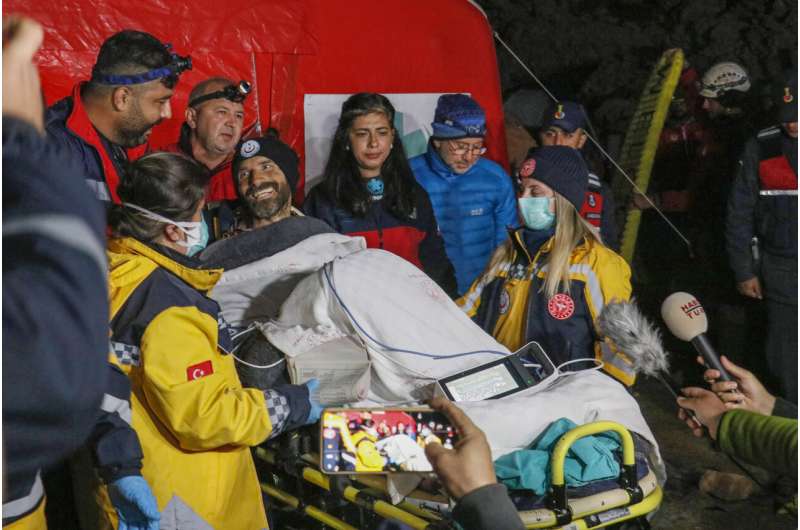
The American was first treated inside the cave by a Hungarian doctor who went down the cave on Sept. 3. Doctors and rescuers then took turns caring for him. The cause of Dickey's illness was not clear.
On Tuesday, Dickey said that in the cave he had started to throw up large quantities of blood.
"My consciousness started to get harder to hold on to, and I reached the point where I thought 'I'm not going to live,'" he told reporters.
The biggest challenges for the rescuers getting him out of the cave were the steep vertical sections and navigating through mud and water at low temperatures in the horizontal sections. There was also the psychological toll of staying inside a dark, damp cave for extended periods of time.
Around 190 experts from Bulgaria, Croatia, Hungary, Italy, Poland and Turkey took part in the rescue, including doctors, paramedics and experienced cavers. Teams comprised of a doctor and three to four other rescuers took turns staying by his side at all times.
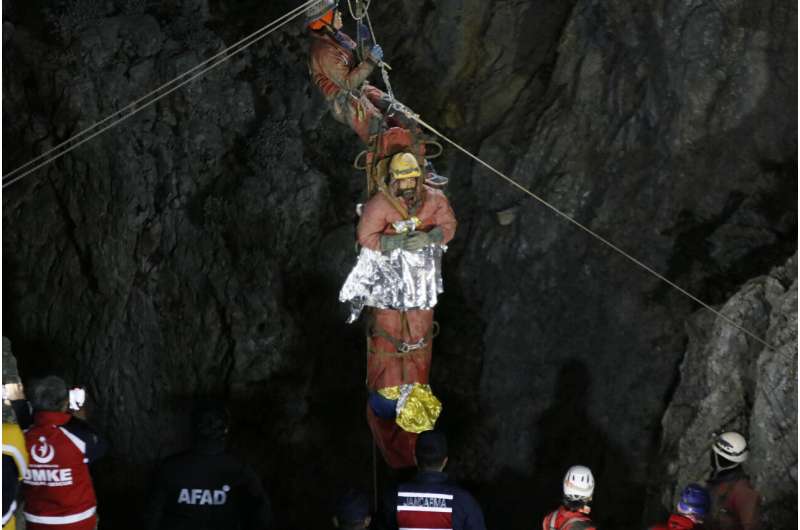
The rescue began on Saturday after doctors, who administered IV fluids and blood, determined that Dickey could make the arduous ascent.
Before the evacuation could begin, rescuers first had to widen some of the cave's narrow passages, install ropes to pull him up vertical shafts on a stretcher and set up temporary camps along the way.
Dickey, who is from Croton-on-Hudson, New York, is a well-known cave researcher and a cave rescuer himself who had participated in many international expeditions.
He and several other people on the expedition were mapping the 1,276-meter (4,186-foot) deep Morca cave system for the Anatolian Speleology Group Association. Dickey became ill on Sept. 2, but it took until the next morning to notify people above ground.
Turkish authorities made a video message available that showed Dickey standing and moving around on Thursday. While alert and talking, he said he was not "healed on the inside" and needed a lot of help to get out of the cave.
-
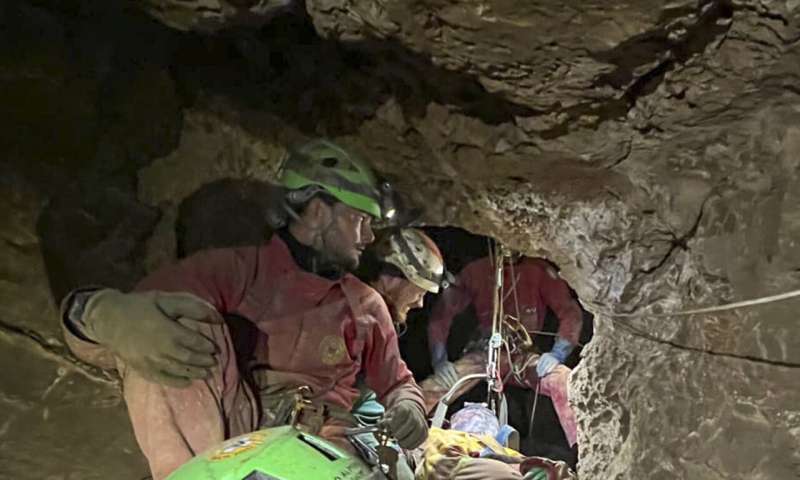
Members of the CNSAS, Italian alpine and speleological rescuers, carry a stretcher with American researcher Mark Dickey during a rescue operation in the Morca cave, near Anamur, southern Turkey, Monday, Sept. 11, 2023. A rescue operation is underway in Turkey’s Taurus Mountains to bring out an American researcher who fell seriously ill at a depth of some 1,000 meters (3,000 feet) from the entrance of one of world’s deepest caves last week and was unable to climb out himself. Mark Dickey is being assisted by international rescuers who by Monday had brought him up to 300 meters (nearly 1,000 feet). Credit: CNSAS Via AP -
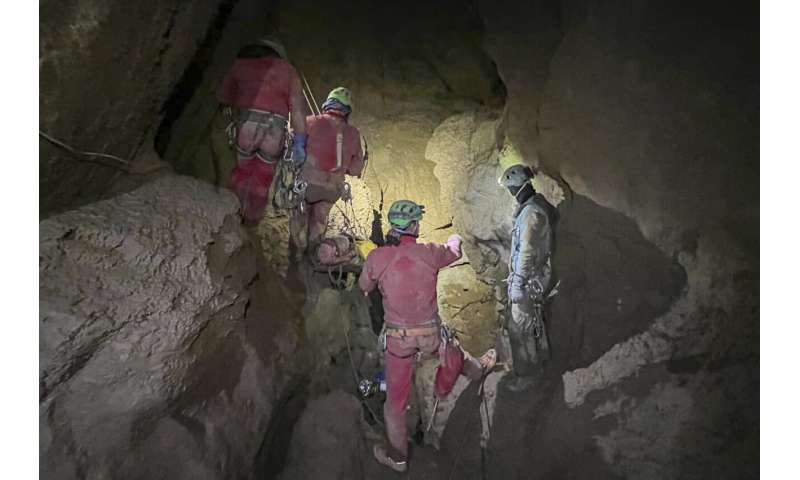
Members of the CNSAS, Italian alpine and speleological rescuers, carry a stretcher with American researcher Mark Dickey during a rescue operation in the Morca cave, near Anamur, southern Turkey, Monday, Sept. 11, 2023. A rescue operation is underway in Turkey’s Taurus Mountains to bring out an American researcher who fell seriously ill at a depth of some 1,000 meters (3,000 feet) from the entrance of one of world’s deepest caves last week and was unable to climb out himself. Mark Dickey is being assisted by international rescuers who by Monday had brought him up to 300 meters (nearly 1,000 feet). Credit: CNSAS Via AP -
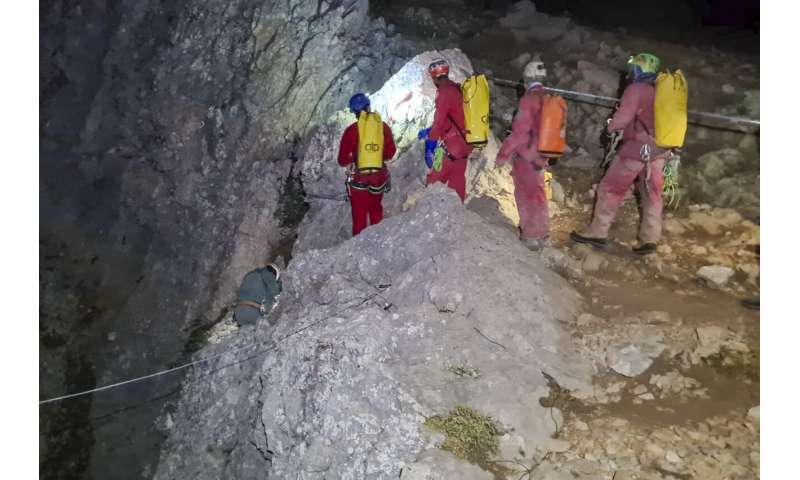
Members of the CNSAS, Italian alpine and speleological rescuers, start to descent on ropes the Morca cave during a rescue operation near Anamur, south Turkey, Monday, Sept. 11, 2023. A rescue operation is underway in Turkey’s Taurus Mountains to bring out an American researcher who fell seriously ill at a depth of some 1,000 meters (3,000 feet) from the entrance of one of world’s deepest caves last week and was unable to climb out himself. Mark Dickey is being assisted by international rescuers who by Monday had brought him up to 300 meters (nearly 1,000 feet). Credit: CNSAS Via AP -
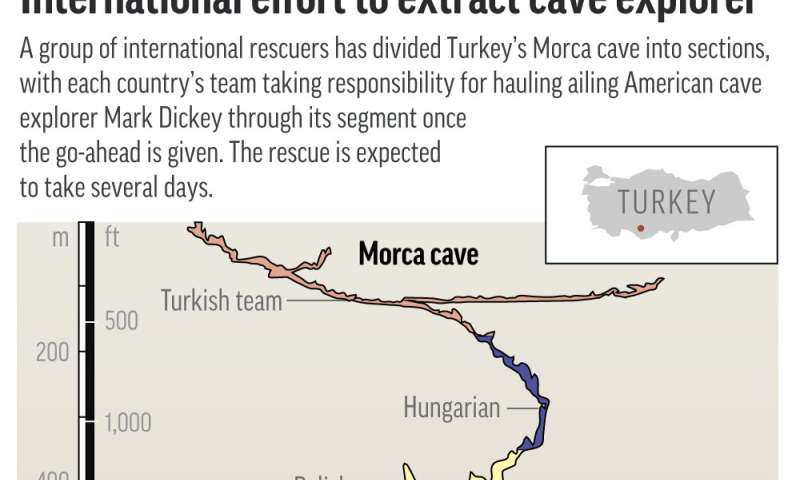
Cave rescue teams from several European countries are mounting an extraction effort to get American Mark Dickey, who fell ill while mapping Turkey's Morca cave, back to the surface. Credit: AP Graphic -
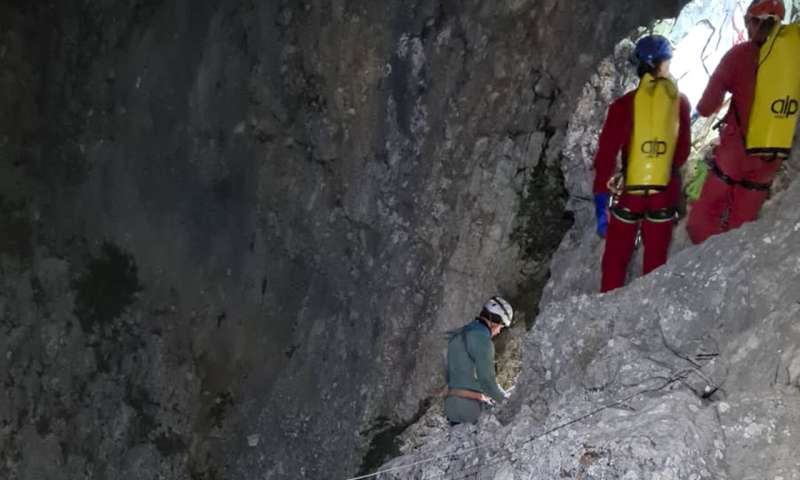
Members of the CNSAS, Italian alpine and speleological rescuers, start to descent on ropes the Morca cave during a rescue operation near Anamur, south Turkey, Monday, Sept. 11, 2023. A rescue operation is underway in Turkey’s Taurus Mountains to bring out an American researcher who fell seriously ill at a depth of some 1,000 meters (3,000 feet) from the entrance of one of world’s deepest caves last week and was unable to climb out himself. Mark Dickey is being assisted by international rescuers who by Monday had brought him up to 300 meters (nearly 1,000 feet). Credit: CNSAS Via AP -
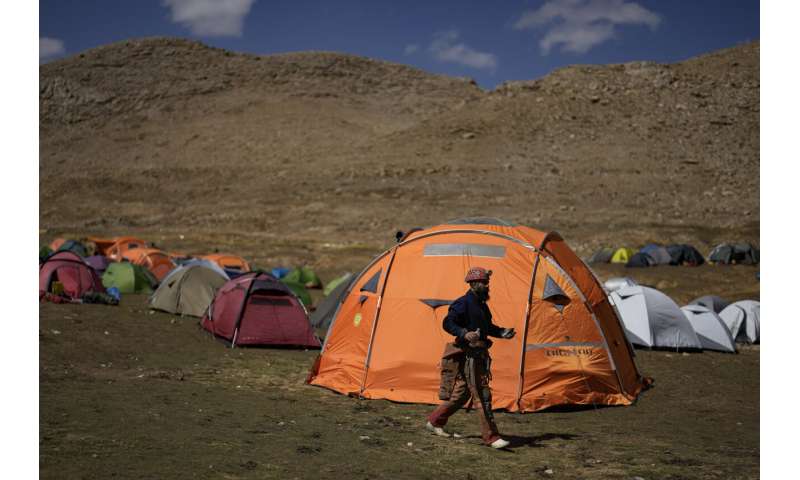
A European Cave Rescue Association (ECRA) member walks next to the tents camp during a rescue operation in the Morca cave near Anamur, south Turkey, Friday, Sept. 8, 2023. American researcher Mark Dickey, 40, who fell ill almost 1,000 meters (more than 3,000 feet) below the entrance of a cave in Turkey, has recovered sufficiently enough to be extracted in an operation that could last three or four days, a Turkish official was quoted as saying on Friday. Credit: AP Photo/Khalil Hamra -
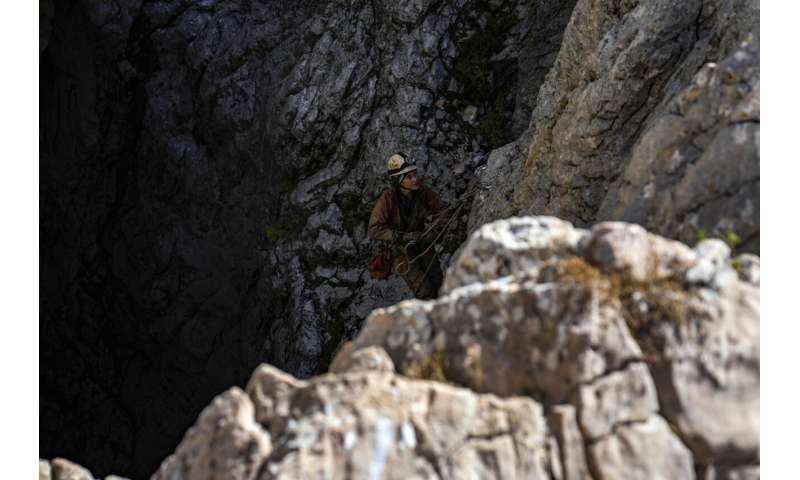
A European Cave Rescue Association (ECRA) member, goes down into the Morca cave near Anamur, southern Turkey, Friday, Sept. 8, 2023. Turkish and international cave rescue experts are working to save an American speleologist trapped at a depth of more than 1,000 meters (3,280 feet) in a cave in southern Turkey after he became ill. Credit: AP Photo/Khalil Hamra -
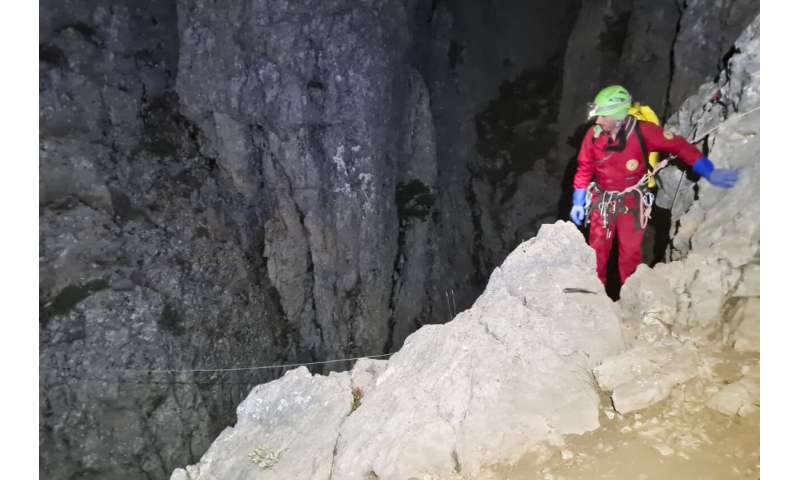
Members of the CNSAS, Italian alpine and speleological rescuers, start to descent on ropes the Morca cave during a rescue operation near Anamur, south Turkey, Monday, Sept. 11, 2023. A rescue operation is underway in Turkey’s Taurus Mountains to bring out an American researcher who fell seriously ill at a depth of some 1,000 meters (3,000 feet) from the entrance of one of world’s deepest caves last week and was unable to climb out himself. Mark Dickey is being assisted by international rescuers who by Monday had brought him up to 300 meters (nearly 1,000 feet). Credit: CNSAS Via AP
After his rescue, the head of Turkey's Disaster and Emergency Management Presidency, Okay Memis, told a news conference that the health of Dickey was "very good."
The European Cave Rescue Association said many cave rescuers remained in the cave to remove rope and rescue equipment used during the operation.
The association expressed its "huge gratitude to the many cave rescuers from seven different countries who contributed to the success of this cave rescue operation."
"The fact that our son, Mark Dickey, has been moved out of Morca Cave in stable condition is indescribably relieving and fills us with incredible joy," Mark's parents. Debbie and Andy Dickey, said in a statement.
© 2023 The Associated Press. All rights reserved. This material may not be published, broadcast, rewritten or redistributed without permission.





















